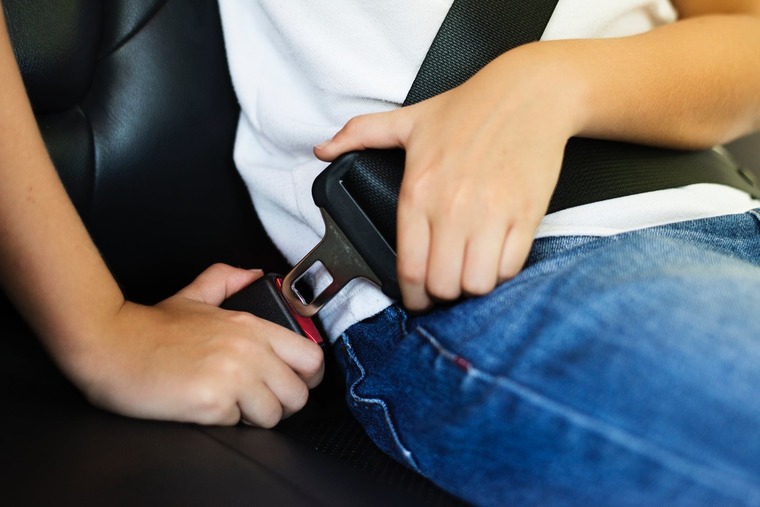As we begin the second month of 2021, Nevada Highway Safety and Patrol has recently released preliminary traffic data from 2020. This data gives insight into Nevadan’s driving patterns and helps identify necessary improvements to highway safety.
Nevada saw 314 traffic-related fatalities in 2020, ten more than 2019. This increase of slightly more than three percent was not surprising considering a significant spike in fatal accidents during the months of February, June, and August of last year. In Clark County, however, the number of fatalities remained fairly similar with 185 deaths during 2020, as compared to 186 deaths in 2019.
Pedestrian fatalities also increased in 2020, with an eighteen percent increase from 2019. In Clark County, this number also rose from 51 to 52 fatalities.
The statistic that the Nevada Department of Safety was most concerned about was the increase in fatalities due to a passenger not wearing a seatbelt. Statewide accidents rose from sixty fatalities to seventy-two fatalities of drivers and/or passengers not wearing their seatbelts. This increase was also present in Clark County where the number of seatbelt related fatalities increased from 29 to 33. [1]
Importance of Seatbelts while Driving
Choosing to wear a seatbelt is one of the safest choices a Nevadan can make when getting on the road. The National Highway Traffic Safety Administration (NHTSA) states that seatbelts saved an estimated 14,955 lives in 2017. In addition, forty-seven percent of those killed in car accidents were unrestrained during the time of the accident. [2]. Here are some additional facts about buckling up:
- Buckling up is the single most effective thing you can do to protect yourself in a crash: Wearing your seatbelt is the best way to protect yourself from distracted, aggressive, or impaired drivers. Seatbelts keep you secured in the car, and keeps you from being ejected—which is almost always deadly.
- Airbags cannot replace seatbelts: Contrary to some beliefs, air bags are meant to work in conjunction with seatbelts, not replace them. Without a seatbelt, you can be thrown into an opening airbag, potentially causing fatal injury.
- The seatbelt should be secured accordingly:
- The lap belt and shoulder belt are secured across the pelvis and rib cage, which are better able to withstand crash forces than other parts of your body.
- Place the shoulder belt across the middle of your chest and away from your neck.
- The lap belt rests across your hips, not your stomach.
- NEVER put the shoulder belt behind your back or under an arm.
- Fit: When buying a car, ensure that the belt is a good fit for your height and body type, and ask your dealer if there are options to adjust the belt. If you are driving a classic vehicle, ensure the lap belt is up to modern safety standards.
- Pregnancy: If you are pregnant, make sure you know how to position your seat and wear a seat belt to maximize your safety and the safety of your unborn child. Doctors advise buckling up in all stages of pregnancy and suggest getting a larger seatbelt from the manufacturer if necessary. [3].
Following and understanding the above information can help reduce the number of fatal motor vehicle accidents in Nevada; in addition, encourage others who don’t to start wearing their seatbelt.
Pedestrian Safety
In addition to seatbelt safety, pedestrian safety has become a growing issue in Nevada. Nationally, a pedestrian is killed every eighty-eight minutes in traffic.[4] Pedestrian fatalities can be avoided with the caution of both pedestrians and drivers. As pedestrians, it is important to use marked signals on the road, as well as the sidewalks or pedestrian bridges. Additionally, it is important to be predictable and avoid jumping into the street abruptly. Lastly, it is important to keep free of distraction like phones or earphones, and keep one’s attention on their surroundings. This can prevent collisions and can prevent delayed reaction times.
As drivers, it is important to always be on the lookout for pedestrians, especially in hard-to-see conditions and in pedestrian-heavy locations like parking lots. Slow down and be prepared to stop when turning or otherwise entering a crosswalk and stop well back from the cross-walk to give other vehicles an opportunity to see the crossing pedestrians so they can stop too. If you notice another vehicle stopped at a crosswalk, do not pass it and slow down until it is safe / visible that the passenger has passed. Lastly, follow slower speed limits in school zones and in neighborhoods where children are present, and eliminate distractions that can prevent you from driving safely.
[1] https://news3lv.com/news/local/nevada-finishes-with-314-road-fatalities-in-2020
[2] https://www.nhtsa.gov/vehicle-safety/seat-belts
[3] https://www.nhtsa.gov/sites/nhtsa.gov/files/documents/pregnant-seat-belt-use.pdf


